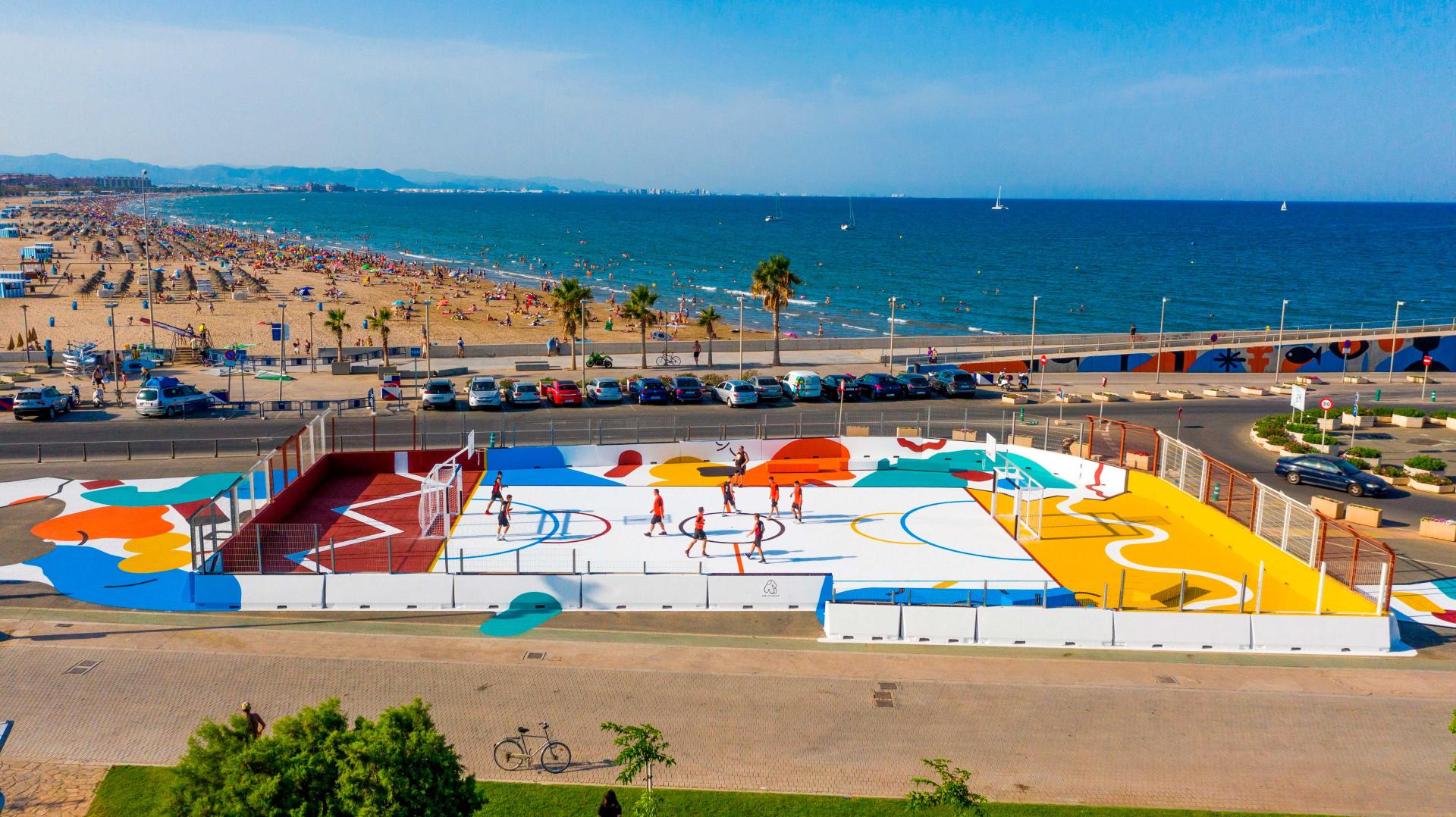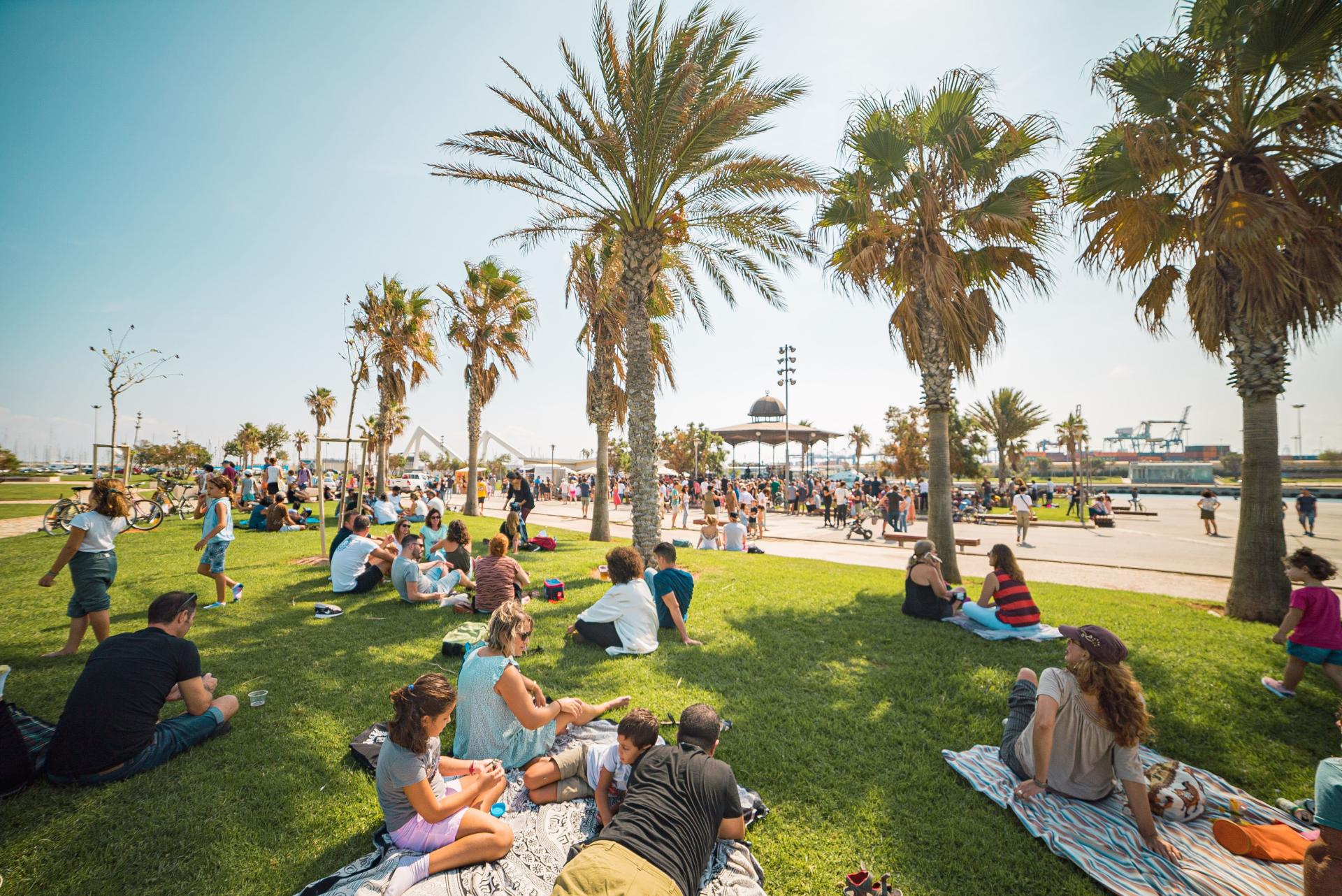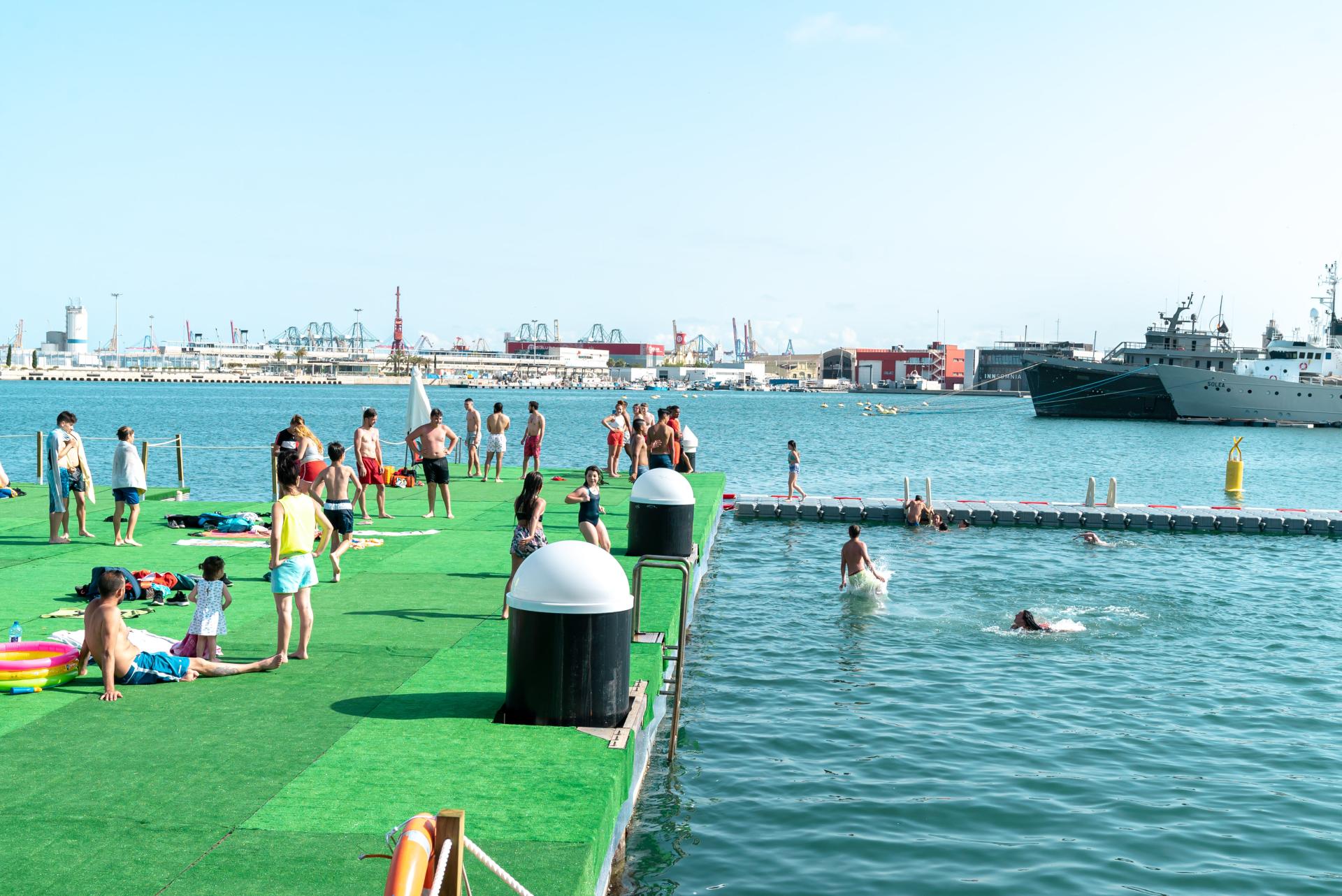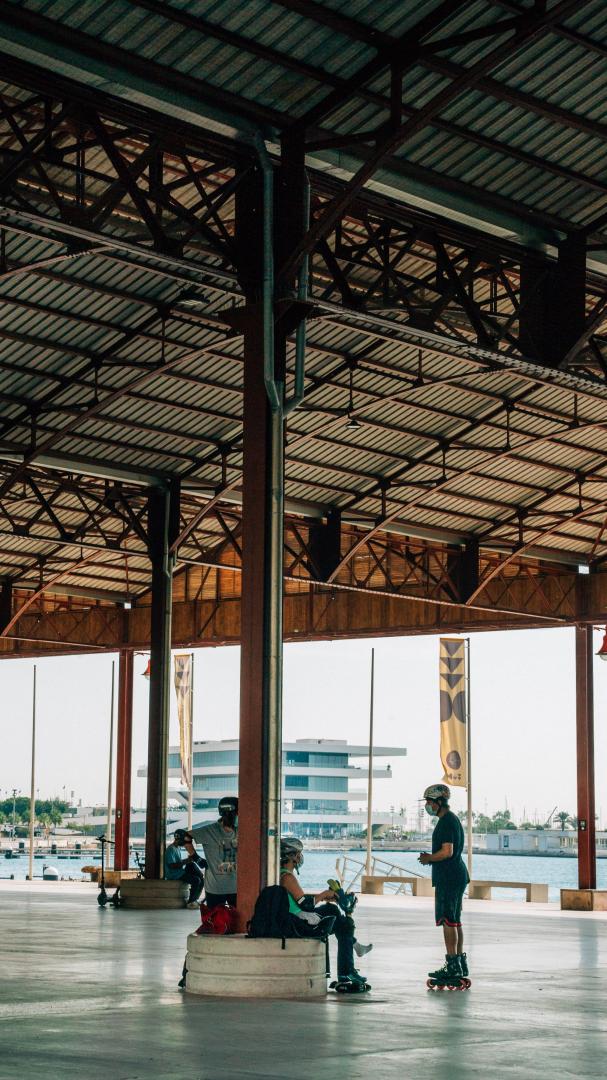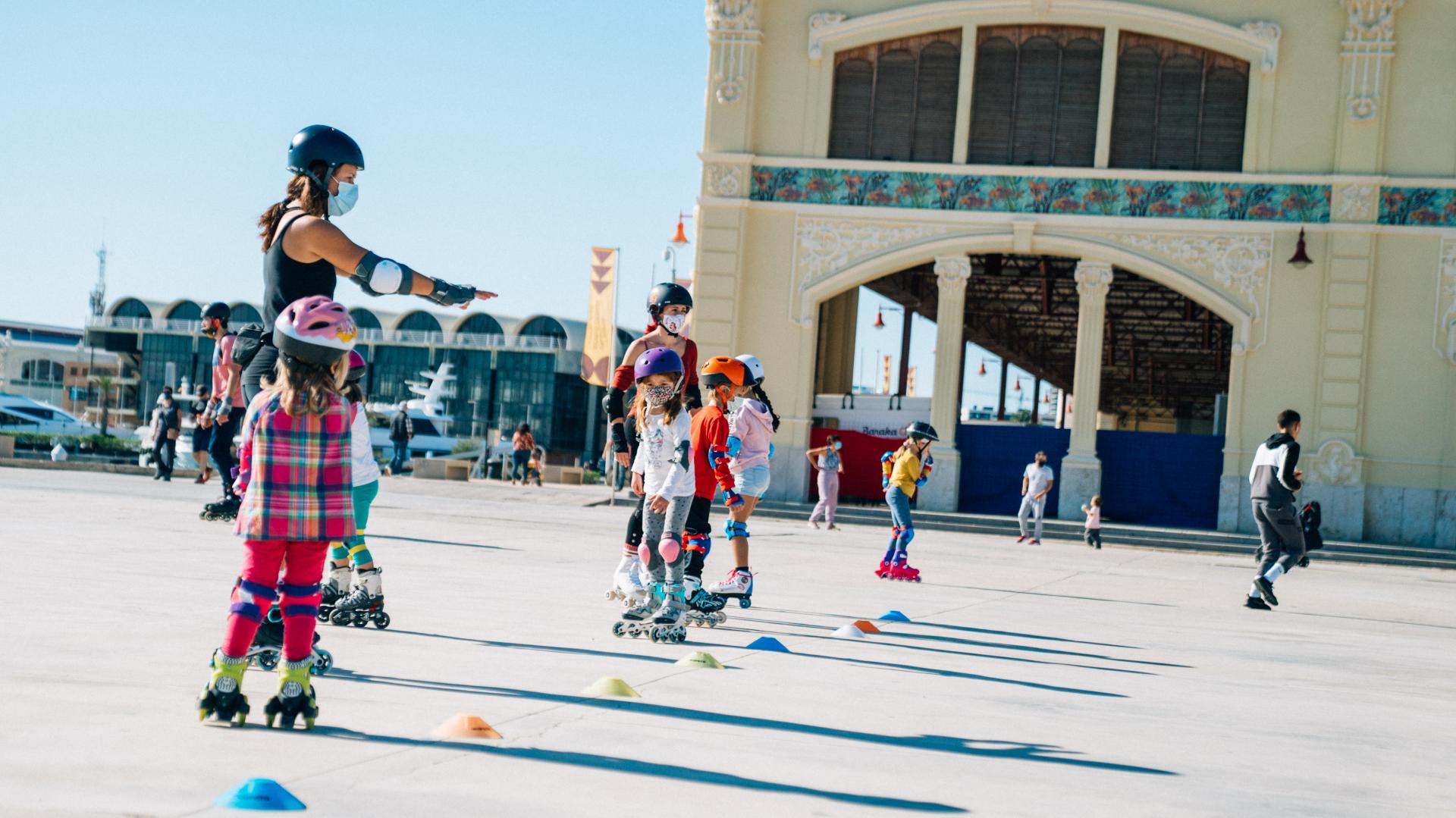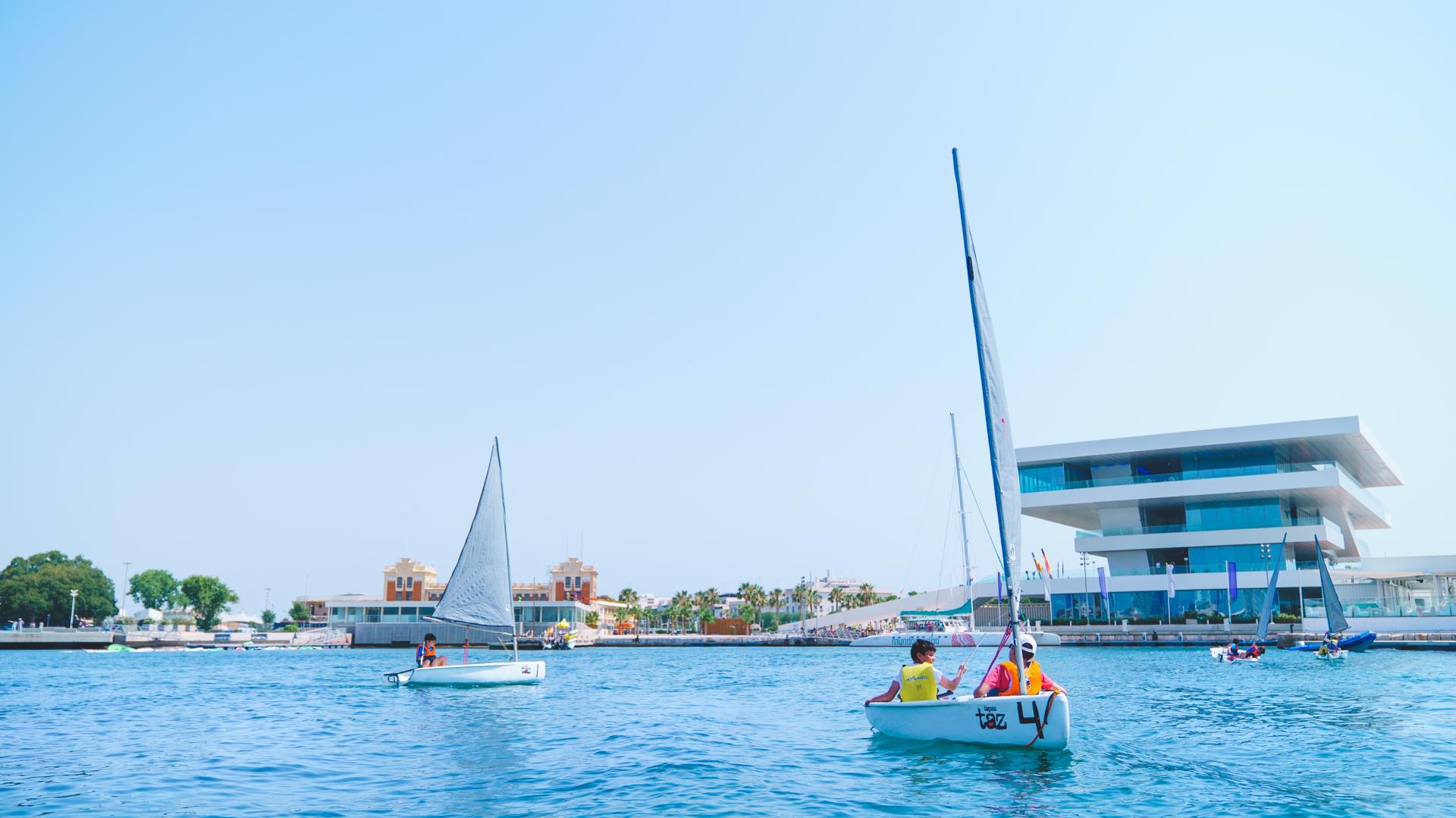La Marina de València
Basic information
Project Title
Full project title
Category
Project Description
The dock has been transformed from being a disused place to become the Mediterranean District of Innovation and Creativity, where knowledge economy and space co-design merge. The result is an inspiring scenario favouring happiness, collaboration and the development of ideas. Here, three different environments flow together: work (entrepreneurial and training hub), nautical activities (sports and industry) and citizen enjoyment (gastronomy, culture and healthy leisure).
Project Region
EU Programme or fund
Description of the project
Summary
La Marina de València represents a creative process of citizen appropriation and productive activation of a waterfront area previously deteriorated and in disuse. It has been a challenge to fill it with new life and to co-design a common space for coexistence, where innovation, creativity and entrepreneurship converge with nautical, cultural, sporting, and gastronomic activities.
Following this vision, València 2007 Consortium (CV07), the managing body of the site, had two goals in mind: to turn La Marina into the driving force behind the economic transformation of València, and to restore the area as the citizens' major maritime public square. Today, La Marina has become a universe for experimentation, where people enjoy, vibrate and connect, ideas flow, and good, beautiful and new things happen.
How has this been achieved? The roadmap is carefully set out in the Strategic Plan 2016-2021. The first step was to open La Marina, making it accessible, green, inclusive, pleasing to the eye and welcoming, and then to re-connect it with the city and turn it into the heart of the maritime districts and the new centre point of València. This process of urban co-creation, which strengthened the memory of the site, required the sum of diverse perspectives: neighbourhoods, public administration, businesses, students and experts from different disciplines. Throughout the process, it has been the role of the CV07 to listen, generate knowledge and coordinate the project by means of an agile, sustainable and efficient management.
Step by step, variety of actions has been carried out. For instance, the re-invention of the former America's Cup bases as spaces for culture, innovation, and entrepreneurship; the revitalisation of the space through a nautical and cultural agenda; series of artistic interventions; the rehabilitation and new planning for the use of historic buildings; the La Marina Living Lab experimentation platform and the continuous improvement of public space.
Key objectives for sustainability
An Integral Plan for economic, environmental, and social sustainability forms the backbone of La Marina’s management model.
Environmental sustainability targets:
- Promoting energy transition and sustainable mobility: All vehicles and machinery used for maintenance, security and cleaning at the site are electrically powered. Furthermore, 7 km of cycle lanes and 175 parking barriers have been installed. Every 4 out of 10 visitors come to La Marina by bike, making it the city's second most visited area by bikers. In addition, sensors were installed in public lighting fixtures to reduce electric energy consumption. CV07 also includes environmental protection and energy efficiency clauses in public tenders.
- Reducing waste generation through a circular economy plan that focuses on recycling systems, waste management and landscaping.
- Maintaining biodiversity by daily cleaning of the water surface and regular water quality testing. Nowadays, the Marina is a nursery for endangered species, managed by the Oceanogràfic Foundation.
- Raising public environmental awareness by carrying out activities such as beach and seabed cleaning in collaboration with the groups Bioagradables and Spain Buceo.
For all these reasons, in 2019 La Marina de Valencia was the first marina in the Province of Valencia to obtain the blue flag, a seal of environmental quality awarded by the European Federation for Environmental Education.
Economic sustainability targets:
- Becoming the driving force behind the city's economic transformation based on knowledge economy. La Marina has established itself as a hub of entrepreneurship and innovation attracting hundreds of start-ups and leading technology companies.
Social sustainability targets:
Promoting a culture of change by means of processes that foster social innovation and contribute to the construction of a society committed to designing a better future.
Key objectives for aesthetics and quality
Below are some of the actions taken to accomplish the objective of co-designing a beautiful, accessible, safe, welcoming and pleasant Marina.
- Recovering the memory of the local space and culture: Historic buildings, witnesses of the port’s golden age, have been renovated to reconnect with the identity of the surrounding neighbourhoods.
- Providing a comfortable and accessible space: To make sure that visitors will not get lost in an area of over one million square metres, it was essential to organise the itineraries by means of a signposting plan to guide their steps. In some cases, a few simple lines on the ground were enough to guide the visitor to a secluded viewpoint overlooking the sea. Bicycle and pedestrian access and circulation were also facilitated and fostered, whereas access and traffic for cars was limited and organised. Another action worth mentioning is the installation of the first intelligent pedestrian crossings in the city.
- Creating a beautiful place: Thanks to an artistic residence programme and the cycle “Art in La Marina”, young urban artists have been given the opportunity to portray their artwork in different areas on the waterfront, thereby attracting the visitor’s eye and directing their steps along the various activities taking place in La Marina. Art is transforming La Marina by showcasing a particular environment that aspires to recast art and shape new forms of creativity.
- Creating shade and refreshing spots: The former barren dock is now dotted with green areas. One of these actions was carried out by children, who planted 200 new trees near the children's playground. With the same aim in mind, a dozen fountains were also installed throughout the site.
The ultimate image is that of a Marina where children can run and play, where an increasing number of people are skating, cycling and practising all kinds of sports, and where people can enjoy a pleasant walk in front of the sea, by themselves or in company.
Key objectives for inclusion
In the first decade of the 21st century, the dock was converted into a venue for major events such as the America's Cup and Formula 1 racing. Once these events had ended, they left behind abandoned facilities and a space deprived of identity. It became one of the main purposes of CV07 to render the historic port back to the maritime districts and to the rest of the city. One of its first actions was to remove the physical and symbolic barrier of the Formula 1 fences bordering the site. Thereafter, different strategies were set out to recover the citizens' bond and to generate reasons to visit La Marina again.
- Attracting families, young people and the general public through an ongoing cultural agenda. Cultural activities have invested the site with a new dynamism. One of the successful examples is the series of day-time free concerts in the restored modernist pergola.
- Promoting female talent through specific clauses in the contracts entered to with concert organisers.
- Bringing nautical sports closer to the public. Nautical sports are being promoted for all sectors of the public, for example, by making light sailing areas accessible to people with functional disabilities or reduced mobility or by holding open days to promote nautical activities organised by the schools and clubs on the site.
- Creating free and open access spaces for sport. A beautiful and colourful multi-sports court designed by the young artist Abel Iglesias was built in the dock using recycled Formula 1 fences. Also, a swimming channel and the first natural swimming pool in Valencia were created, reviving the older residents’ tradition of bathing in the port.
- Involving the social stakeholders of the maritime neighbourhoods as partners in the revitalisation of La Marina, through innovative participatory processes.
Results in relation to category
La Marina de València is no longer an abandoned and underused waterfront, instead it has become the second most visited area in the city, after the Jardines del Túria. In 2019, the site's sensors counted an influx of 7.7 million visitors. Today, citizens can enjoy an open, accessible, inclusive, green and lively waterfront, where an average of 70 socio-cultural, sporting and business events are held every year. In this meeting place visitors can enjoy an interesting range of nautical, gastronomic, cultural, and healthy family leisure activities, with over 7 km of bike lanes, 2,500 m2 of children's leisure facilities and 100.000 square meters of green areas.
According to external surveys conducted by Culturalink (2019), 79% of visitors came to La Marina at least twice a year, 99% would recommend it, and the average satisfaction rating is remarkable (7.7%). Interestingly, it is also worth mentioning that 31% of the interviewed persons said that they had interacted with someone during their visits to La Marina whom they had never met before. Creating an enriching space to connect different profiles of people is also part of the achievements of the waterfront activation process..
At the same time, La Marina de València has already become one of the public spaces with the highest urban quality in the city and a setting of opportunities for economic development, which in turn contributes to the creation of employment and the modernisation of the industrial sector, based on knowledge economy. It also provides a meeting point for experts and entrepreneurs from different sectors and disciplines. Every day, hundreds of people come to work at La Marina, an innovative ecosystem built on diversity, creativity and serendipity. The impact of La Marina’s productive activation can also be measured in numbers: the CV07 is no longer a loss-making entity, but instead, for the first time in its history and for three consecutive years, operating profit has been generated.
How Citizens benefit
Participatory design is the key to reinventing the old port of Valencia. Here are some examples:
- Regeneration of the surroundings of Tinglado 2, a large 10,000 m2 square: This project is driven by participatory dynamics such as guided routes through the maritime districts to study mobility and existing links with the dock, or co-designing workshops that seek specific solutions by combining different perspectives (craftsmanship, art and design).
- Creation of La Base for Culture, Creativity and Innovation: In order to co-design this venue (former headquarters of an America's Cup team) and suggest possible uses, several groups have been involved: Civic Wise, Carpe Via, CuldeSac, the artist Hyuro, and the workshop Interdisciplinary Sustainable Architecture (ISA)- Lab, of the Universitat Politècnica de València.
- Voces de La Marina (voices of La Marina): A re-appropriation process of La Marina’s identity by involving the local community in the new naming of streets and squares on the waterfront.
- Surem La Marina: An educational project which incorporated the perspective of school children in building a new vision for La Marina.
- La Plaza de la Ola and future skatepark: A project nurtured by the proactivity of the local skateboarding community.
- Placemaking Week Europe 2019: This event transformed La Marina de València into an environment where local and international placemaking experiences were shared, and into a live laboratory where ideas applicable to the waterfront were discussed and worked on.
- Epicentre of València World Design Capital: The Marina of Valencia was the driving force behind València's candidacy as world design capital in 2022 and has positioned itself as a landmark space for Valencian design. The offices of the València Design Capital Association are located in the Marina, and its cultural offer will soon be extended with two new spaces to promote social innovation by means of design.
Innovative character
As opposed to the model focussing on large investments and infrastructures, La Marina de Valencia proposes a new model of urban transformation based on the generation of added social, cultural and economic value. It presents a model based on the values of sustainability, inclusion, and the binomial concept of innovation-public space. Besides the planning of strategies and the continuous evaluation of processes and results, its methodology creates new participation and co-design formats together with the different end users, the local stakeholders (neighbourhood associations, schools, local social, artistic, sporting and cultural entities, etc.), that are connected with each other and thus empowered to create the future of La Marina and, consequently, the future of their city. At the same time, it also involves different entrepreneurs and companies to help rebuild a local innovation ecosystem, a collaborative environment based on knowledge economy and creativity. The model of La Marina de València also integrates design as a method to increase the innovation capacity in search of solutions for a greener, more inclusive, and resilient society.
Another ground-breaking element is CV07's agile and efficient public management model, which does not act as a purely administrative government agency with standardised services, but rather guides the connection and cooperation between the different stakeholders involved by means of a close and transparent management.

